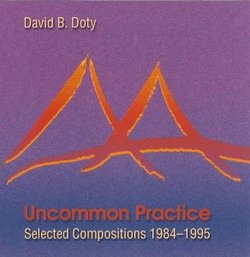| All Artists: Title: READY SET RELEASE Members Wishing: 2 Total Copies: 0 Genre: Special Interest Style: Poetry, Spoken Word & Interviews Number of Discs: 1 SwapaCD Credits: 1 UPCs: 765481864328, 765481864328 |
Search - :: READY SET RELEASE
 | READY SET RELEASE Genre: Special Interest This CD contains seven compositions in Just Intonation in diverse styles--ranging from short "fractured pop tunes" to extended orchestral movements--realized by means of MIDI technology. My principal objectives in creating... more » |
Larger Image |
CD Details
Synopsis
Album Description
This CD contains seven compositions in Just Intonation in diverse styles--ranging from short "fractured pop tunes" to extended orchestral movements--realized by means of MIDI technology. My principal objectives in creating this music were twofold: to explore some of the novel possibilities offered by Just Intonation and to make emotionally and intellectually satisfying music. I believe I have achieved both of these goals to a significant degree. The selections on this CD were composed between approximately 1984 and 1995 and recorded in 1998. All of them use some form of Just Intonation. I will not attempt a detailed explanation of Just Intonation here, as I have done that elsewhere (The Just Intonation Primer. San Francisco. Just Intonation Network, 1993, 1994). Let it suffice for the moment that Just Intonation refers to any tuning system in which all of the intervals can be represented by integer frequency ratios, with a strongly implied preference for the smallest numbers compatible with a given musical purpose. This method of tuning is commendable for its inherent beauty, its variety, and its long history (it is as old as civilization). This is in distinction to twelve-tone equal temperament, the tuning system in general use in the West for the last 200 years, in which all intervals other than the octave are represented by irrational numbers. In other words, all of the intervals of equal temperament, except the octave, are intentionally mistuned to varying degrees, for the sake of convenience. As a result, consonance is compromised and the intervallic palette is impoverished. This music is the result of a long and slow learning process--about synthesis, sampling, and MIDI, which technologies were evolving rapidly during the period of this work; about Just Intonation; and about what compositional styles and techniques are suited to various just tunings. Taken collectively, there is no conventional name for the music that resulted from this process, other than the highly overused eclectic. It is computer music, in the sense that it was produced with digital instruments under MIDI control, but it does not involve algorithmic composition, artificial intelligence, or the more arcane techniques beloved of academic computer-music composers. All pieces are through-composed in the laborious, old-fashioned way; The composer is solely responsible for all aesthetic decisions. This is definitely not experimental music, in the Cageian sense--I am more interested in result (aesthetic response) than process. It is tonal music (with a lowercase t), music in which hierarchic relations of tones are important and in which melodies, phrases, periods, and movements have clear tonal centers. It is world music, in the sense that it is inspired and influenced by many musical cultures. It is unapologetically derivative. I have drawn on the resources of most of the musics I have played, studied, or merely listened to and enjoyed. Gamelan, the predominant influence in much of my earlier work, has retreated into the background, but may still be detected in certain structures and styles of elaboration. More prominent are styles of polyphony from the Western European middle ages and renaissance, garage rock from the 1960s, Balkan instrumental dance music, the ancient Japanese court music gagaku, Greek rebettika, and traditional and contemporary Irish music (and probably two or three others that I have forgotten). Some of the shorter pieces use fixed scales, traditional or otherwise, whereas the longer, more complex pieces use some form of "extended" Just Intonation; these more extensive pitch sets were not predetermined, but evolved in the process of composition, as demanded by the growth of melody, harmony, and counterpoint. Information on the tunings of the individual pieces is included in the liner notes for the benefit of listeners who already have some knowledge of the subject. For the rest, I suggest you listen to this music as you would any other, experience whatever you experience, and not be overly concerned with these technical issues.

